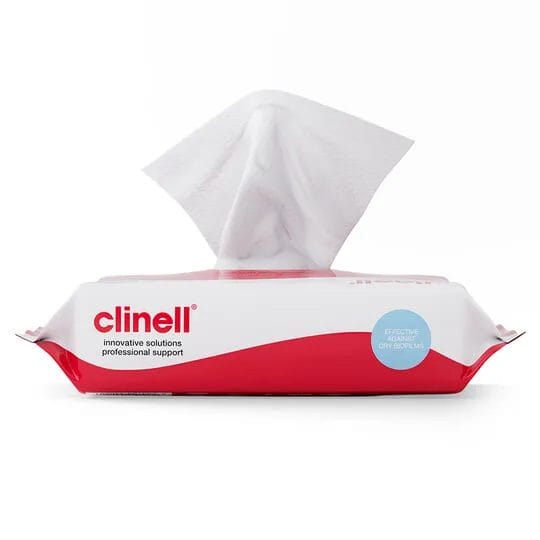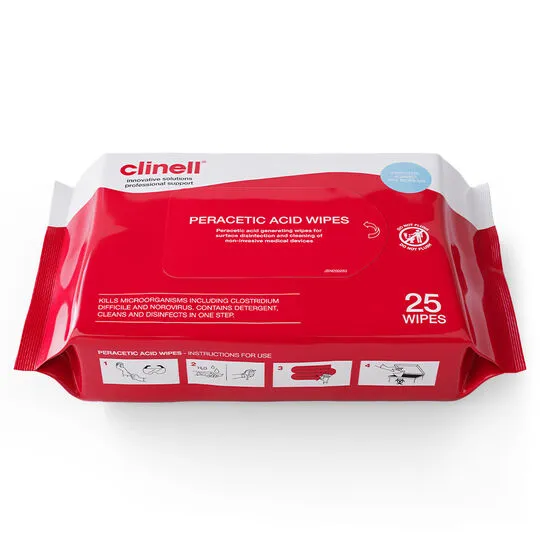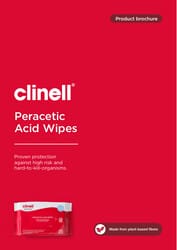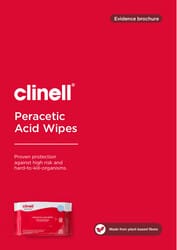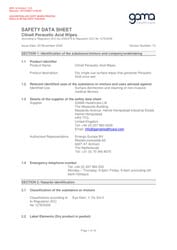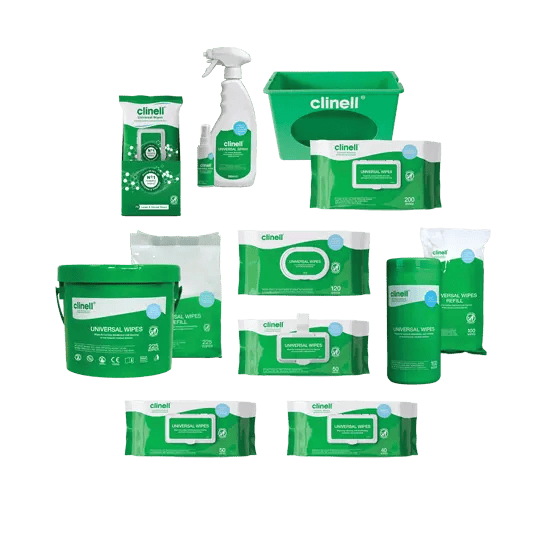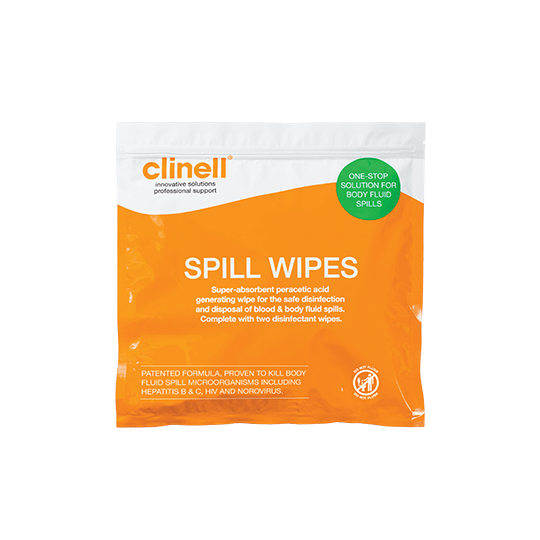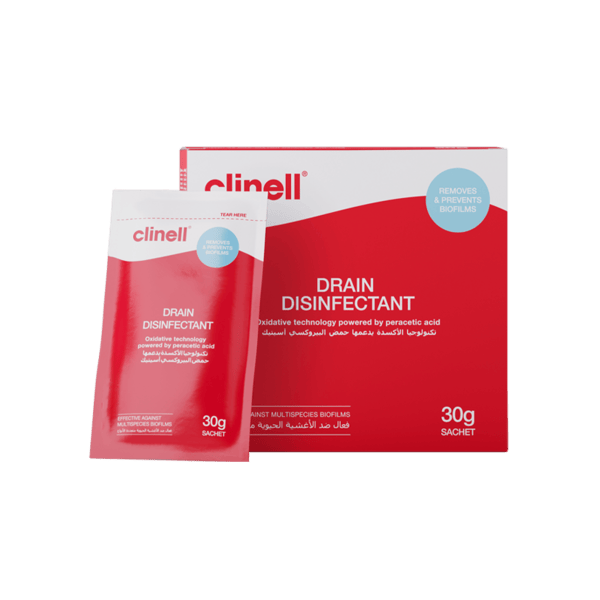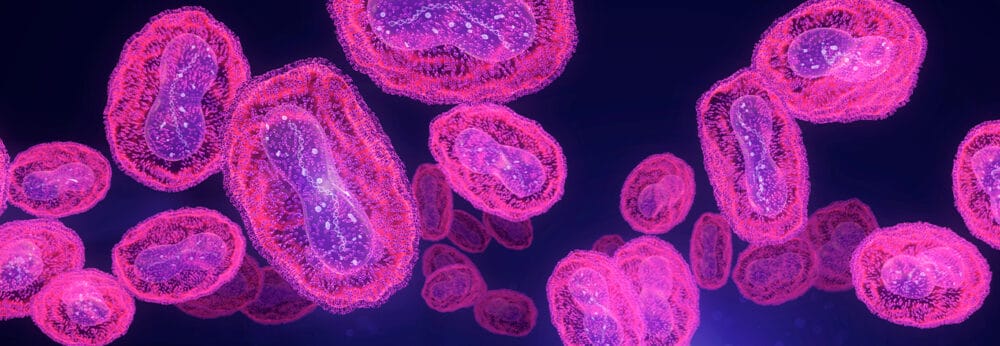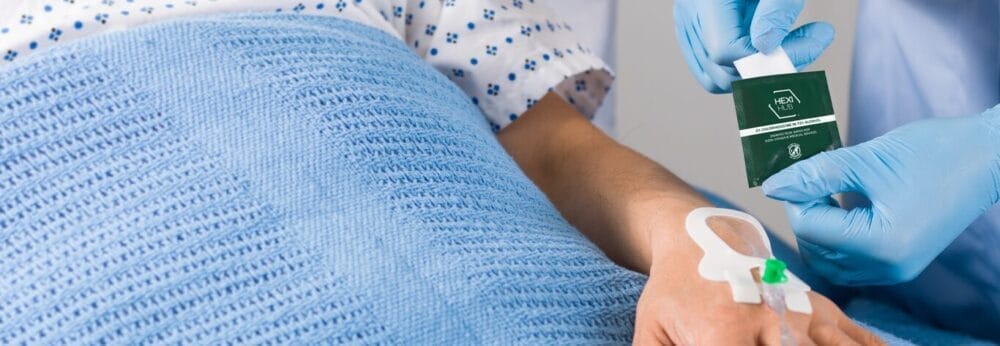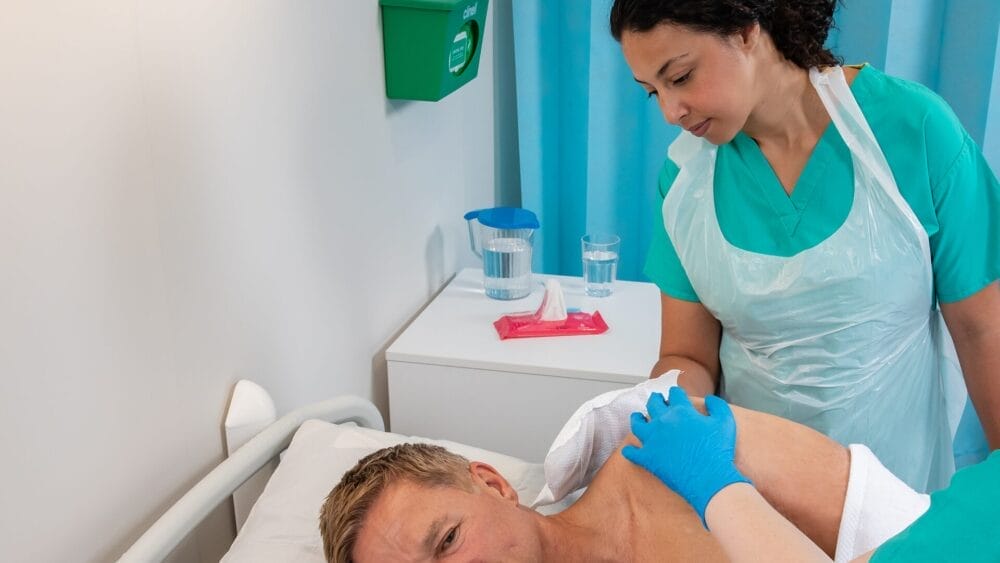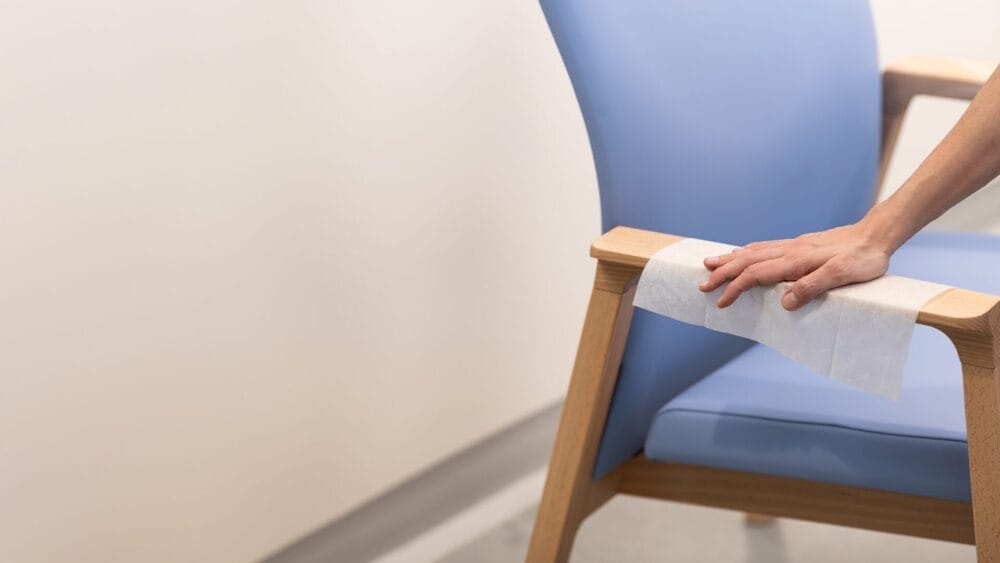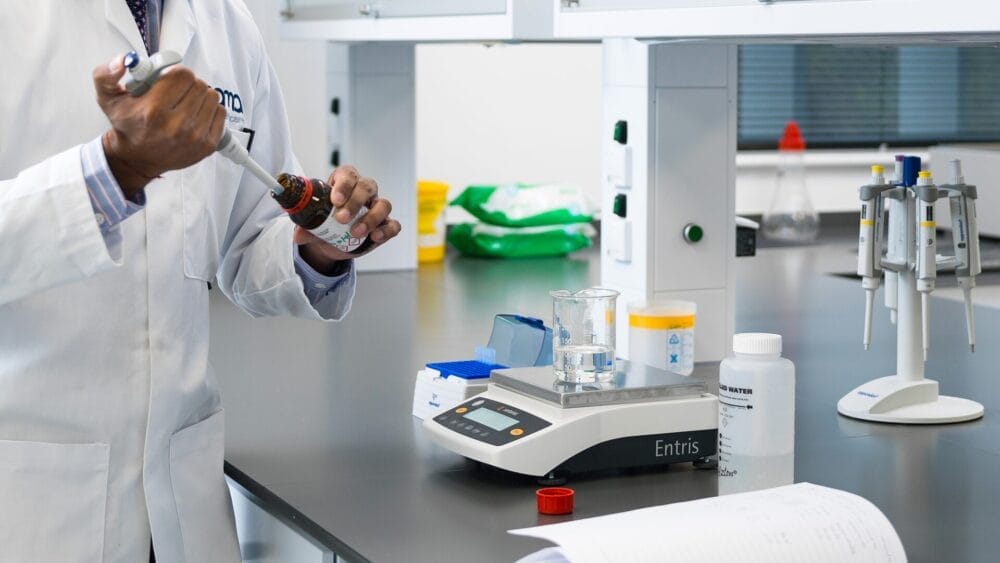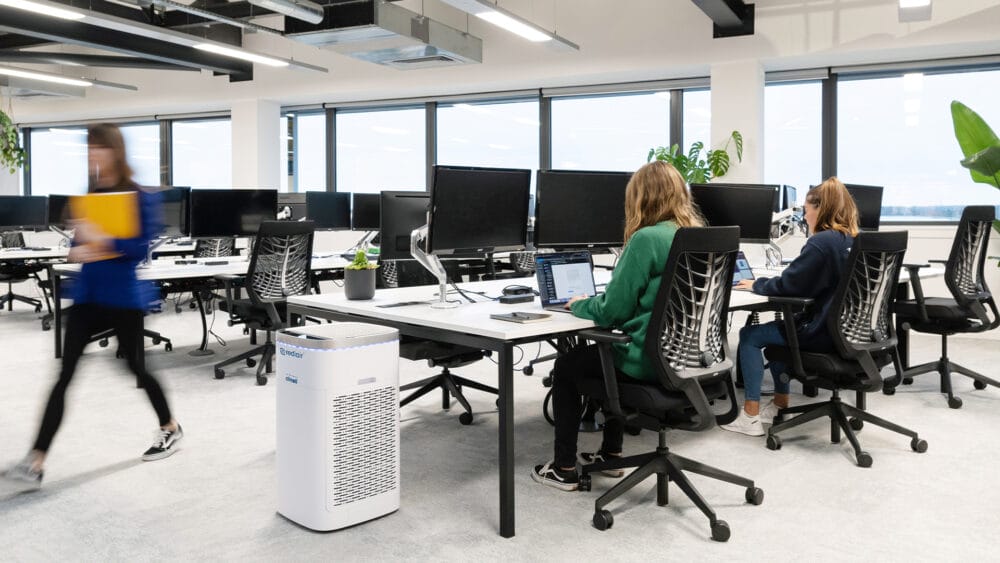Peracetic Acid Wipes
Ideal for preventing & resolving outbreaks. More effective than chlorine against hard-to-kill organisms, spores and biofilms. Effective from 10 seconds. No pre-cleaning required.
The perfect complement to an everyday disinfectant, such as Clinell Universal Wipes. Clinell Peracetic Acid Wipes are ideal for outbreaks thanks to proven protection from high-risk and hard to kill organisms. Our patented, near-neutral pH formula is incredibly powerful yet kind to surfaces. Proven to reduce C. difficile-associated disease by 72%.
Previously known as Clinell Sporicidal Wipes.
Product code: CS25
NHSSC: VJT113
EFFECTIVE AGAINST CORONAVIRUS IN 60 SECONDS
Wiping out biofilms
Why do some outbreaks seem impossible to resolve? Emerging evidence suggests that dry surface biofilms may be the answer.
Infection prevention innovation
| Effective Against | Test | Kill Time |
|---|---|---|
| Biofilms | ||
| Dry biofilms | ASTM E2967-15 | Wiping 10 sec, contact 2 min |
| Bacteria | ||
| Acinetobacter baumannii | EN13727 | 10 sec |
| Enterococcus faecalis | EN13727 | 10 sec |
| Enterococcus hirae | EN13727 EN14561 |
10 sec 1 min |
| Escherichia coli (E. coli) | EN13727 | 10 sec |
| Klebsiella pneumoniae (ESBL) | EN13727 | 10 sec |
| Pseudomonas aeruginosa | EN13727 EN14561 |
10 sec 1 min |
| Staphylococcus aureus | EN13727 EN14561 |
10 sec 1 min |
| Spores | ||
| Bacillius subtilis | EN 17126 | 5 min |
| Bacillius cereus | EN 17126 | 5 min |
| Clostridium difficile | EN17126 | 2 min |
| Mycobacteria | ||
| Mycobacterium avium | EN14348 | 2 min |
| Mycobacterium terrae | EN14348 | 2 min |
| Fungi | ||
| Candida auris | EN 13624 | 10 sec |
| Virus | ||
| Adenovirus | EN14476 | 1 min |
| Canine parvovirus | EN14675 | 2 min |
| Human Coronavirus (MERS-CoV) | EN14476 | 1 min |




Why are the wipes dry?
Peracetic acid can be very reactive. This makes it great for breaking down microorganisms and biofilms but can result in a short shelf life.
Clinell Peracetic Acid Wipes contain a patented blend of precursors that come air laid between the dual-layers of our dry wipe material. When exposed to water, these precursors react to generate our active ingredients – a synergistic blend of peracetic acid and hydrogen peroxide.
By generating the active ingredients only when they’re needed, Clinell Peracetic Acid Wipes benefit from a much longer shelf-life, better disinfectant activity and improved material compatibility.
Are Clinell Peracetic Acid Wipes acidic?
Actually no. Because they use patented technology to generate a blend of oxidative disinfectants only when they’re needed, Clinell Peracetic Acid Wipes are active at a near-neural pH.
Most generic peracetic acid products are very acidic – they have a low pH. This helps the manufacturers make peracetic acid more stable for a longer shelf-life.
Clinell Peracetic Acid Wipes take a different approach: by manufacturing the product containing dry precursors and then activating the wipe with water at the point of use, Clinell Peracetic Acid Wipes are actually active at a slightly alkaline pH (pH 9.0-9.5).
How much water should I use?
Clinell Peracetic Acid Wipes were designed with our users in mind – we want to remove as many potential errors as possible.
Independent water-loading tests show that there’s no significant difference between tap soaking times from 2 to 6 seconds, or from immersing in a 10-litre bucket for up to 6 seconds. Over-wetting does not readily decrease the activity of the wipe.
Will Clinell Peracetic Acid Wipes damage my surfaces?
Clinell Peracetic Acid Wipes have been formulated for exceptional surface compatibility. They’re tested against common rubbers, plastics and metals to make sure they’re safe for regular disinfection. We also work with medical device manufacturers to make sure Clinell products are safe for use on their equipment (see our webpage on compatibility for more information).
What is the active concentration of peracetic acid?
Clinell Peracetic Acid Wipes produce a concentration of 3,500ppm of available peracetic acid.
Do they generate harmful end products?
The active ingredients of Clinell Peracetic Acid Wipes break down into simple, non-toxic end products: vinegar CO2, oxygen and water.
Should I use Clinell Peracetic Acid Wipes instead of Clinell Universal?
Clinell Universal Wipes are any everyday cleaning & disinfectant product. They’re effective against many of the most common causes of healthcare associated infections – including Gram-negative and Gram-positive bacteria, viruses and emerging fungal pathogens, such as Candida auris.
Clinell Peracetic Acid Wipes are a high-performance cleaning & disinfectant product. They’re primarily designed for tackling outbreaks, high-risk and hard to kill organisms. In particular, they’re effective against some of the most resistant microbial categories: bacterial spores and those embedded in biofilms.
Clinell Peracetic Acid Wipes and Clinell Universal Wipes are complementary, being used together as part of a robust infection prevention policy. Typically, Clinell Universal Wipes are used for routine cleaning and disinfection, with the option to “step up” to Clinell Peracetic Acid Wipes in cases where extra coverage and performance is needed.
How do Clinell Peracetic Acid Wipes compare to chlorine?
Clinell Peracetic Acid Wipes outperform chlorine-based disinfectants in several key areas.
No pre-cleaning. Chlorine is inactivated by organic matter, meaning chlorine-based disinfectants require a surface to be pre-cleaned before disinfection. Clinell Peracetic Acid Wipes contain detergent which allow them to clean and disinfect in a single step – resulting in cleaner wards and reduced surface contamination.
More effective against hard-to-kill organisms. Introducing Clinell Peracetic Acid Wipes results in a reduction of hard-to-kill pathogens such as C. difficile surviving in clinical environments resulting in reduced rates of infection.
More effective against dry surface biofilms. Clinell Peracetic Acid Wipes are the most effective solution against dry surface biofilms. When using chlorine-based disinfectants, we often see an initial high log reduction but, unfortunately, the biofilms are still able to transfer surviving pathogens into our environment and recover within a matter of hours. Clinell Peracetic Acid Wipes completely prevent transferability and delay growth for 6.5 days.
No transference. The unique dual-layer construction of Clinell Peracetic Acid Wipes is able to trap microorganisms, preventing them from being transferred form a dirty surface to a clean one.
Contact us for more information
Are you interested in using Peracetic Acid Wipes in your organisation? We'd love to tell you more about them and explain how the most powerful wipe in the world offers unbeatable protection against persistent outbreaks, high-risk organisms and dry surface biofilms. To find out more and order a free sample, get in touch using the contact form.
Recommended for you
Latest
Norovirus: Understanding its transmission and prevention in the UK
Introduction Norovirus is recognised as the leading cause of viral gastroenteritis…
Clean Between to Reduce Healthcare-Associated Infections
Healthcare-associated infections (HAIs) are a significant concern for healthcare facilities…
Mpox: emergence of a new threat
A new threat related to mpox is emerging, in the…
Wiping away infections – the CLEEN way!
Cleaning shared medical equipment with a disinfectant wipe at least…
Embracing sustainability and cost savings: The journey of Clinell Indicator Notes to paper-based solutions
At GAMA Healthcare, we’ve always prided ourselves on being at…
Introducing HEXI HUB: A seamless transition in our product line
We’re pleased to announce an update to our product offering…
Innovative solutions for tackling Carbapenemase-producing Enterobacteriaceae (CPE) at King’s College Hospitals
King’s College Hospital NHS Foundation Trust, one of London’s largest…
Gloves Off: reducing unnecessary plastic waste during environmental cleaning and disinfection
In this blog, Dr Phil Norville discusses the momentum-gaining ‘Gloves…
Gloves Off: Navigating SDS sheets and skin safety claims in environmental decontamination products
In this blog, James Clarke (Head of R&D, Science &…
Help reduce staff sickness and improve air ventilation with Rediair
As the winter season approaches, concerns over staff sickness and…

